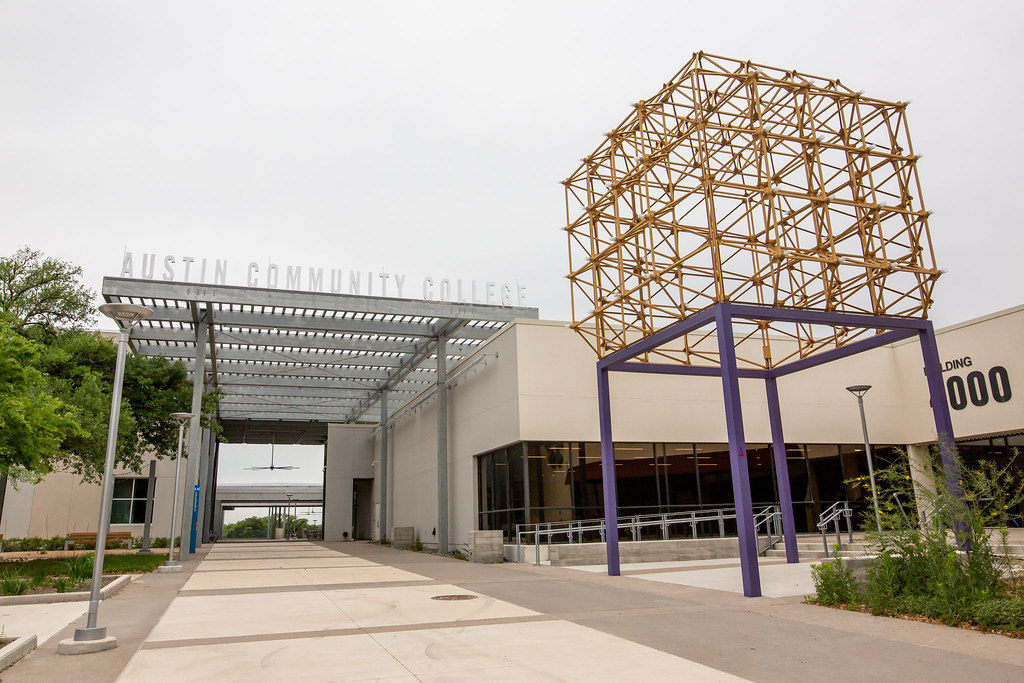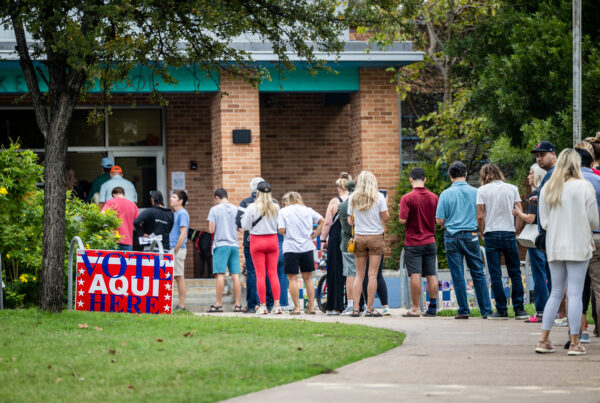Last year, Gov. Greg Abbott signed into law House Bill 8, a $683 million investment in community colleges. The measure changes the funding formula for two-year colleges, awarding money based on student outcomes rather than enrollment.
The bill passed with bipartisan support, and proponents say it will help community colleges adapt to the ever-evolving job market in the state.
As part of the Standard’s coverage on the Future of Work in Texas, we spoke with Ray Martinez, president and CEO of the Texas Association of Community Colleges, about how institutions are using that funding to adapt to the state’s changing workforce.
This transcript has been edited lightly for clarity:
Texas Standard: I think that a lot of Texans – not all Texans, but a lot of them – have thought in the past of community colleges as a way to give students a bit of a leg up if they couldn’t make it, say, into a four-year program, for example.
But what we’re seeing is a real shift here in Texas, I think, represented by this House Bill 8, really with a view toward employers. Am I off there?
Ray Martinez: I think that is true. And I think that with, for example, the increased population that we’ve seen in Texas throughout the past 10 to 15 years, that growth continues.
So the effort behind passing HB 8 – and it was passed on a bipartisan basis; in fact, it was passed unanimously – all of that is because there is an emphasis upon ensuring that as our population grows and our state’s economy continues to be robust and vibrant, as it has been for many years now, we want to keep that momentum going.
And to do that, we’re going to have to ensure that the population has access to skills-based training and that we that we align the needs of our employers to ensure that there’s alignment between the skills that are needed for the jobs that are being created and the workforce that we have – the population that we have in the state.
And we should point out that this is not a small transition. For example, we’re seeing the chip sector take a much more prominent role in Texas, and this could be a standout category of employment here. I want to, though, talk a little bit more about how HB 8 could affect community college operations. As a practical matter, what does this mean for those schools?
Well, I mean, as a practical matter, first and foremost, we’re grateful that the Legislature, when they passed HB 8, also gave, as you said in your introduction, a large increase in funding for our 50 community colleges across the state.
And what we want to ensure is that we continue to offer – as we have been for years across our 50 community colleges – programing on the academic side. For example, as you said, the majority of students who enroll in the community college aspire to transfer after achieving an associate degree at our colleges to a four-year university and get a bachelor’s degree. That continues to be the case.
And there’s no question that the increased funding will allow our 50 community colleges to continue offering, you know, quality programing with regard to academic degree programs – our associate degrees that we offer in criminal justice and sociology, things like that. But importantly, this also allows us to focus on the workforce education side of our community colleges.
» MORE: Community college funding in Texas shifting to focus on student outcomes
Just to be very clear: $683 million over 50 community colleges in Texas. What do you do with that money?
Well, we focus on student success. That’s the most important thing that we can do with that.
But does this mean hiring new administrators, hiring more teachers, developing new programs? What exactly?
It means primarily ensuring that there are upskilling and reskilling opportunities, for example, for students who are looking to be able to progress in a current career or looking to move to a new career like nursing. It ensures that we can stay focused again on providing the support that students need to enroll in our colleges.
HB 8 is not just a change in the funding formula, but it also created a new financial aid program that allows students in high school who are from an economically disadvantaged family to be able to enroll in dual-credit courses at no cost. So no tuition, no fees.
And that is a game-changer to ensure that across the state of Texas that students who are in our secondary high schools across the state, our public high schools, will have the chance to enroll in dual credit and in many cases, in some of our high schools, actually achieve an associate degree, even as they graduate from high school with that high school diploma.
» GET MORE NEWS FROM AROUND THE STATE: Sign up for Texas Standard’s weekly newsletters
How much, on average, is it costing to enter community college right now in Texas?
Well, we’re actually one of the more affordable community colleges in the country. I think the average tuition and fees is around the $3,000 mark for a year of instruction, essentially – and again, that’s just focused on tuition and fees.
But it varies, of course, from college to college. But the point is that cost should not be a barrier when students are considering enrolling in one of our community colleges across the state.
And what do you anticipate community colleges doing to try to plug those gaps when it comes to employer needs?
Well, first and foremost, we are touring as we have been for years, but even more so now with the passage of HB 8, that we are at the table and in dialogue with employers – again, employers that have statewide impacts or large employers that are coming into the state or already here in Texas.
But even more critically is to ensure that our colleges are building partnerships, building collaborations and establishing, for example, work-based learning opportunities with employers at both, again, sort of the local area – so if you’re Howard College in Big Spring, Texas, ensuring that you can establish, those work based learning opportunities for students who are coming into a community college.
Again, the majority come in thinking that they might want to transfer to a university. But increasingly, a large number of students are coming into our community colleges, enrolling into our community colleges, who want to learn a skill … and get to work.













